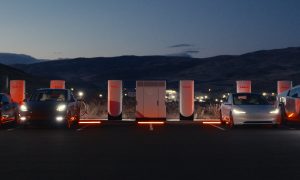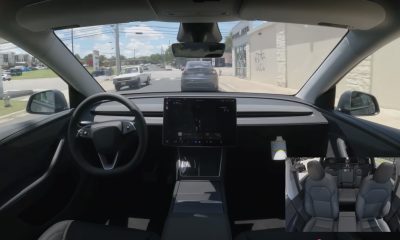

Tesla Model S
James May gears up to pit his new Tesla vs a Hydrogen Toyota Mirai
Former Top Gear host and Model S owner James May will compare his new battery-powered Tesla sedan to his most recent purchase: a Toyota Mirai, a Hydrogen Fuel Cell Electric Vehicle (HFCEV).
The Toyota Mirai is the Japanese automaker’s hydrogen fuel cell-powered mid-size sedan and was unveiled in 2014 at the Los Angeles Auto Show. Toyota has been developing fuel cell vehicle technology since 1992 when the company decided to invest time into producing alternative fuel options for its vehicles, and decided to redevelop the Mirai for release in 2020. Hydrogen must be extracted from an external source, such as water or a fossil fuel. This can be a lengthy and somewhat laborious process, and Tesla CEO Elon Musk has stated in the past he finds hydrogen fuel cells to be “extremely silly”.
After speaking at the Automotive World News Congress event in Detroit in 2015, Musk gave his thoughts on the process of separating hydrogen from its main derivative to supply a vehicle with energy. “It’s just very difficult to make hydrogen and store it and use it in a car. Hydrogen is an energy storage mechanism, it is not a source of energy, so you have to get that hydrogen from somewhere,” Musk said to reporters.
“If you get that hydrogen from water, so you’re splitting H2O, the electrolysis is extremely inefficient as an energy process. If you compare it to a solar panel, and you use that energy from a solar panel to charge a battery pack directly, compared to trying to split water, take the hydrogen, dump the oxygen, compress the hydrogen to an extremely high pressure or liquefy it and then put it in a car and run a fuel cell, its about half the efficiency, its terrible. So why would you do that? It makes no sense.”
May purchased his Tesla Model S 100D in early November and unveiled it on the DRIVETRIBE YouTube channel. Describing his newest purchase as “just a car”, May stated he enjoyed the excessive cargo space, the frunk, and the keyfob shaped like his vehicle. While the man responsible for hosting a show that has primarily showcased the power and performance of petrol-based automobiles, he admits he does not know where the automotive industry will go in the future due to the evolving popularity of electric vehicles. He does see, however, electric cars being the norm.
Vehicles powered by a hydrogen fuel cell must be “filled up” at a hydrogen fuel station. These stations are rare according to energy.gov, who states there are 49 total hydrogen refueling locations within the United States and Canada. The availability of Tesla Superchargers is growing every week, and currently, there are 1,636 total stations, with 14,497 total Superchargers in North America. The convenience factor of electric vehicles, as of now, is more beneficial to a consumer that lives outside of California, where 43 of the 49 total hydrogen stations are located.
An influencer like James May who has such a strong following is comparing the advantages and disadvantages of both battery-powered vehicles and hydrogen fuel cell cars could be beneficial. This strategy could bring an even and unbiased contrast between the cars powered by different fuel sources. May stated he will release a follow-up video within the coming weeks that will do an in-depth comparison of the two vehicles.
You can watch James May’s unveiling of his new Toyota Mirai below.
News
Tesla confirms massive hardware change for autonomy improvement
Tesla has confirmed that a recent change made to some of its recently refreshed vehicles is, in fact, a strategy it will use to improve its suite as it continues to work toward autonomy.

Tesla has confirmed that a recent change made to some of its recently refreshed vehicles is, in fact, a strategy it will use to improve its suite as it continues to work toward autonomy.
Tesla first introduced a front-facing camera on the front bumper with the Cybertruck.
Then, the Model Y “Juniper” received the hardware update. The Model S and Model X both received the front-facing camera with its latest update, which was officially revealed last week.
Tesla used new language with the release of the front-facing cameras on the Model S and Model X, confirming they will assist with several things, including “using Autopilot and Actually Smart Summon capabilities”:
“Enhanced visibility when parking or using Autopilot and Actually Smart Summon capabilities.”
This tiny feature on the new Tesla Model Y is perhaps its biggest addition
This is the first time Tesla has used this sort of language, as it was a completely different description with the launch of the new Model Y in January.
When Tesla launched this vehicle, it said the front bumper camera “provides a wider field of view for automatic assisted driving and advanced Smart Summon.”
Tesla switched from using cameras and sensors to only cameras with the launch of Tesla Vision several years ago. The company’s utilization of cameras comes from Tesla’s belief that Ultrasonic Sensors (USS) are not needed for self-driving efforts:
“Along with the removal of USS, we simultaneously launched our vision-based occupancy network – currently used in Full Self-Driving (FSD) (Supervised) – to replace the inputs generated by USS. With today’s software, this approach gives Autopilot high-definition spatial positioning, longer range visibility and the ability to identify and differentiate between objects. As with many Tesla features, our occupancy network will continue to improve rapidly over time.”
CEO Elon Musk has said that sensors were only a crutch and that self-driving would be solved through the use of cameras:
“When your vision works, it works better than the best human because it’s like having eight cameras, it’s like having eyes in the back of your head, beside your head, and has three eyes of different focal distances looking forward. This is — and processing it at a speed that is superhuman. There’s no question in my mind that with a pure vision solution, we can make a car that is dramatically safer than the average person.”
News
Tesla launches new Model S and Model X, and the changes are slim
Tesla’s newest versions of its flagship vehicles have arrived with some slim changes.

Tesla has officially launched the newest versions of its flagship Model S and Model X vehicles, but the changes are pretty slim, which is something we expected when a couple cars were spotted during public testing recently.
The new “refreshed” Model S and Model X were spotted recently by The Kilowatts, and the changes appeared to be a new front camera, a new color, and only a handful of other changes.
Tesla officially announced the launch of the Model S and Model X on Thursday night, and here’s what it listed as the changes to the two vehicles:
Model S & X are now even better – launching today in the US 🇺🇸
Highlights:
– Frost Blue paint color
– Up to 410 miles of range (Model S Long Range – our longest range Tesla yet)
– Even quieter inside: less wind + road noise & more effective Active Noise Cancellation
– New… pic.twitter.com/i4PcEklOWj
— Tesla (@Tesla) June 13, 2025
- Frost Blue paint color
- Up to 410 miles of range (Model S Long Range – our longest range Tesla yet)
- Even quieter inside: less wind + road noise & more effective Active Noise Cancellation
- New wheel designs & improved aerodynamics = more range
- Front fascia camera for better visibility
- Dynamic ambient lighting that brings unique animations along the dash & doors upon entry
- An even smoother ride thanks to new bushings & suspension design
- Adaptive driving beams
- New exterior styling for Model S Plaid, optimized for high-speed stability
- More space for 3rd row occupants & cargo (Model X)
We expected most of these changes, especially the new Frost Blue paint color, as it was spotted by The Kilowatts in its initial coverage of the cars being spotted a few weeks back. Here’s what it looks like officially:
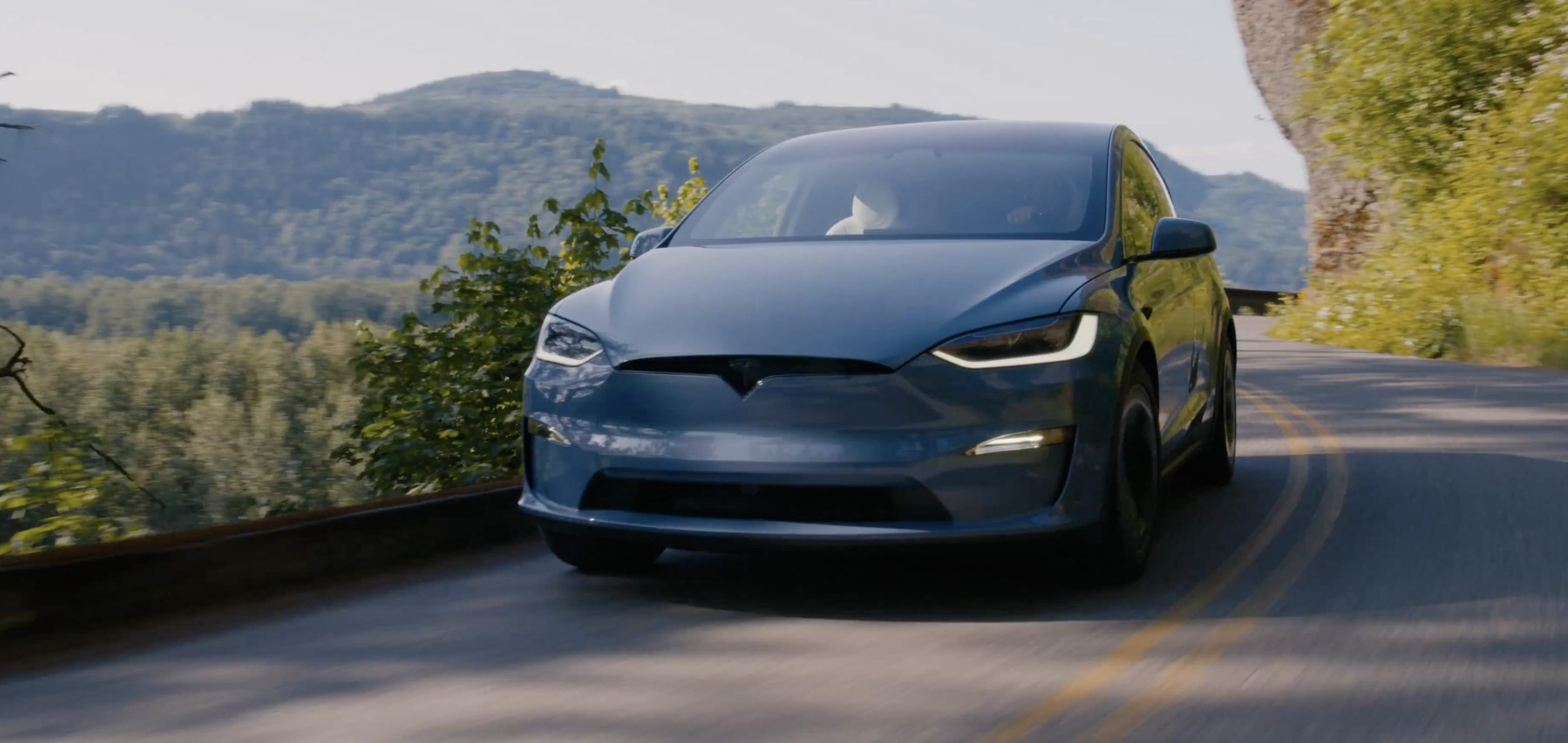
Some of the changes are familiar from the Model Y Refresh, which featured the quieter interior through acoustic-lined glass, a front fascia camera, new bushings, and suspension improvements for a smoother ride.
However, Tesla did refine the Model S Plaid’s exterior for “optimized high-speed stability.” You can see the difference between the two below:
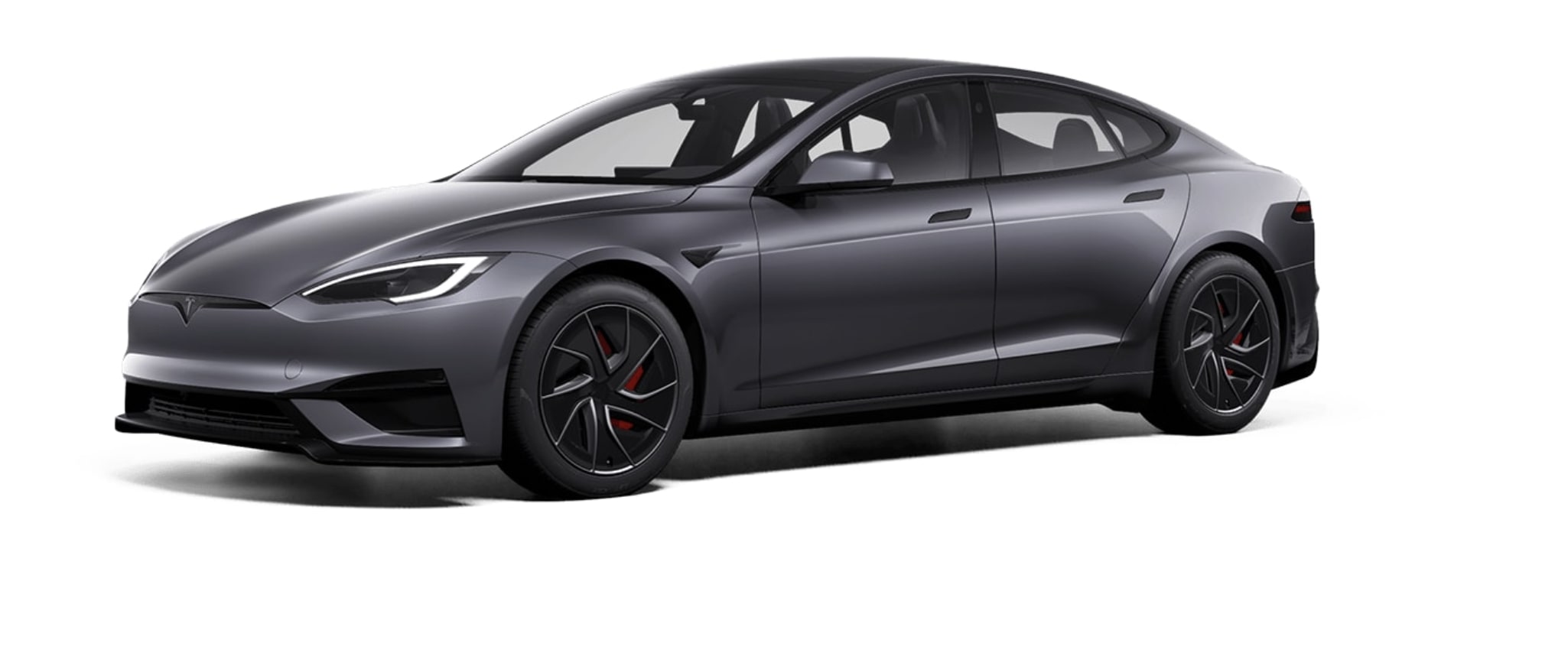

The front-end air diffusers are much deeper, and the front end is more boxy than the previous iteration of the Plaid Model S.
Here are some more images of the Model S that Tesla released in a teaser video:
- Credit: Tesla
Tesla sells such a low volume of the Model S and Model X that it was probably less than likely that the company would put endless manpower and effort into completely redesigning it. CEO Elon Musk said a few years ago that the two cars would only stay in production for “sentimental reasons.”
While they are very special to the Tesla family, they are not incredibly important to the mission of the company.
News
Tesla teases new color while testing refreshed Model S, X
Tesla teased a new color that could be coming to the United States with the new Model S and Model X.
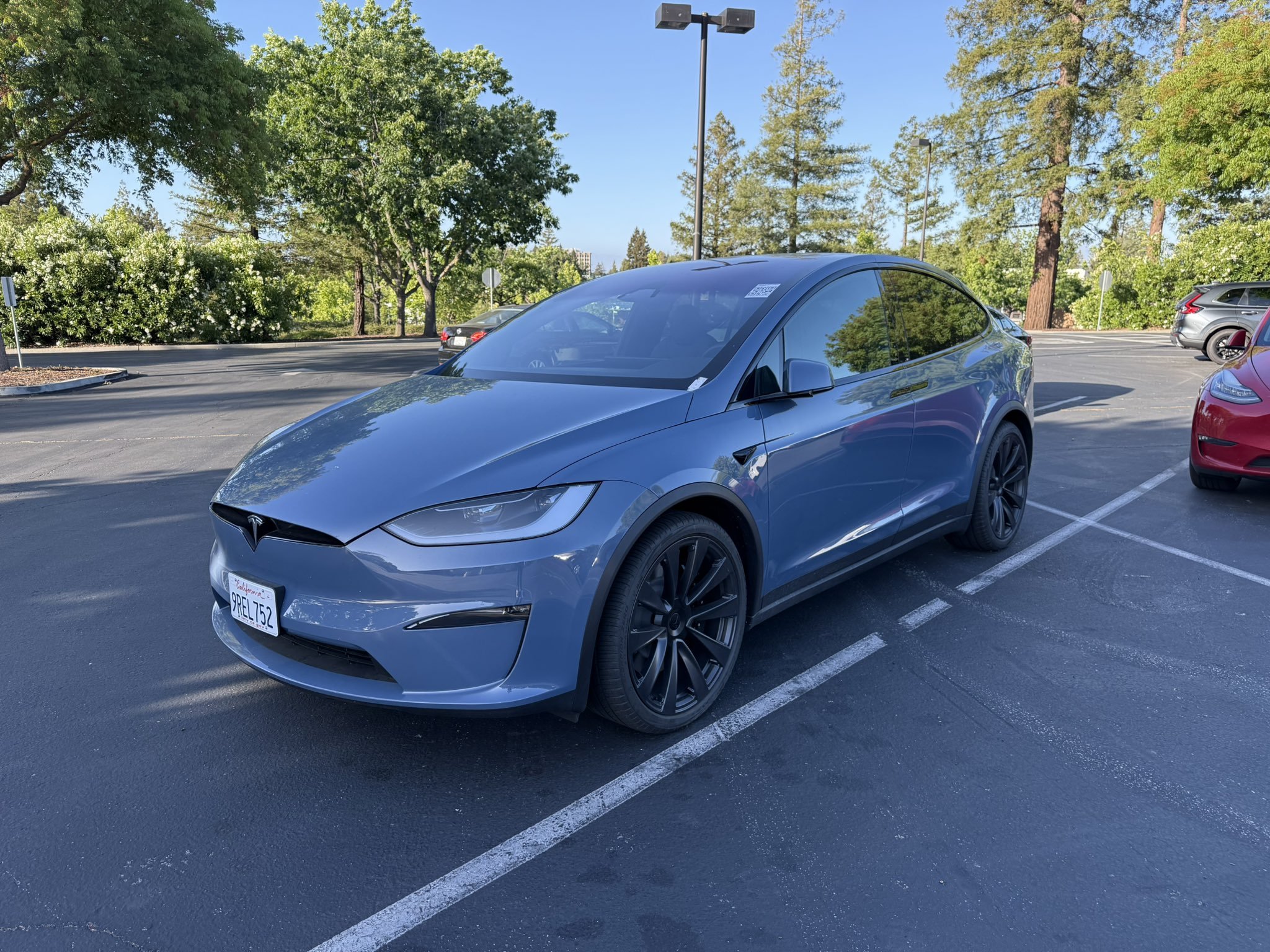
Tesla appears to be teasing a brand new color while it was testing the refreshed Model S and Model X, which was spotted last week in California.
Tesla currently offers six paint options in the United States, but they are all pretty basic. This has not been a problem for owners as wrapping the vehicles is a common practice, but some people would likely see more versatility from Tesla in terms of their standard paint colors.
This is especially relevant as Europe has been able to have both Midnight Cherry Red and Quicksilver, which were, at one time, exclusive to the market.
Quicksilver made its way to the United States, and Tesla did release a new Red last year with “Ultra Red,” but Midnight Cherry Red never made its way outside the walls of Gigafactory Berlin.
Last week, as the first spy images of the new Model S and Model X were taken and released by The Kilowatts, there was a very noticeable difference with the vehicle, as other changes seemed to be relatively underwhelming: a new paint color.
New factory blue, coming soon to a Model X near you pic.twitter.com/3CuN4j1ipq
— The Kilowatts 🚗⚡️ (@klwtts) May 22, 2025
Many believed this was simply a wrap, but Ryan Levenson of The Kilowatts, a former Tesla employee, dispelled that rumor after several questions about it.
He said that this is absolutely a factory paint color and not a wrap:
New color too! If you know what you’re looking for you know that this is factory paint and not a wrap. pic.twitter.com/jBYrimZIQT
— The Kilowatts 🚗⚡️ (@klwtts) May 22, 2025
More images were shared by @supergeek18 on X:
New paint color for Model S/X 🤩 pic.twitter.com/Pb27JruhXs
— Henry (@supergeek18) May 24, 2025
Tesla released a new color earlier this year, but it was just a revision to Black, now called “Diamond Black,” featuring speckles that give a reflection and refraction of light as a diamond would.
However, this new color is certainly quite different than anything Tesla has previously offered in the U.S. before. It is relatively similar to Glacier Blue, a color Tesla launched in Asia. Earlier this year, Franz von Holzhausen, Tesla’s Chief Designer, talked about bringing the color to the U.S.:
“Glacier Blue is just a color that we’ve been talking about with our team — the team is like right through that window by the way — and we were looking at the impact of silver, how do we get pigment into silver and really add a little bit of personality to it. If you look at our palette, you know it was either darks or white, and so we were looking for something in between. Blue is always a fairly popular color.”
It would be a refreshing addition to the options Tesla currently offers, and a breath of fresh air for those who have been wanting a different look altogether.
-

 News5 days ago
News5 days agoTesla Robotaxi’s biggest challenge seems to be this one thing
-

 News2 weeks ago
News2 weeks agoTesla confirms massive hardware change for autonomy improvement
-

 Elon Musk2 weeks ago
Elon Musk2 weeks agoElon Musk slams Bloomberg’s shocking xAI cash burn claims
-

 News2 weeks ago
News2 weeks agoTesla China roars back with highest vehicle registrations this Q2 so far
-

 News2 weeks ago
News2 weeks agoTesla features used to flunk 16-year-old’s driver license test
-

 News2 weeks ago
News2 weeks agoTexas lawmakers urge Tesla to delay Austin robotaxi launch to September
-

 News2 weeks ago
News2 weeks agoTesla dominates Cars.com’s Made in America Index with clean sweep
-

 News2 weeks ago
News2 weeks agoTesla’s Grok integration will be more realistic with this cool feature




